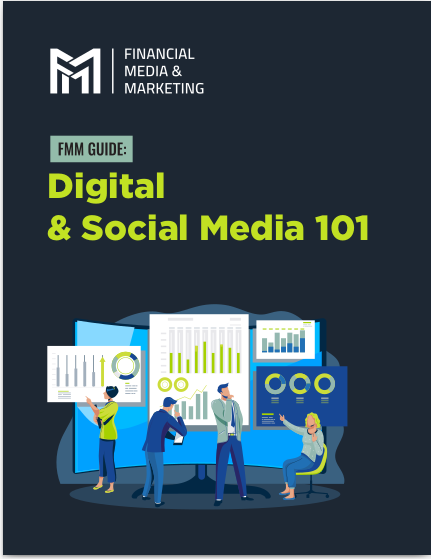Key Takeaways:
-
If you’re losing leads before you even speak to them, it’s often due to weak first impressions, ineffective engagement strategies, or unclear messaging.
-
Refining your approach, from initial outreach to follow-ups, can drastically improve conversion rates and client acquisition.
The Silent Lead Killers You Might Not Even Notice
Your pipeline looks full. Prospects show interest, but before you can even start a conversation, they disappear. Sound familiar? Many financial advisors lose leads without realizing what went wrong. The issue isn’t just in the pitch—it often starts well before you even get a chance to speak with them. Let’s break down the top three reasons leads slip through your fingers and how you can turn it around.
1. Your First Impression is Pushing Leads Away
The Make-or-Break Moment
First impressions happen fast—within seconds. If your online presence, website, or outreach methods don’t immediately resonate with your prospects, they won’t stick around. A generic, impersonal message or an outdated website can send them running before you even know they existed.
Outdated Digital Presence
In 2025, prospects expect a smooth, modern experience. If your website looks like it belongs in the early 2010s, you’re signaling that you might not be up-to-date with financial trends either. An old, cluttered website or hard-to-navigate interface creates doubt in your expertise.
Unclear Messaging
If your messaging is vague or overly technical, prospects won’t see why they need your help. Your value proposition should be clear within seconds of landing on your page or reading your email. Avoid financial jargon that could overwhelm someone unfamiliar with industry terms.
Lack of Personal Connection
Your prospects want to feel like they matter. If your approach is robotic or cold, they won’t see the value in working with you. A lack of personalization in your communication can make leads feel like just another number.
How to Fix It
-
Audit your website regularly to ensure it’s visually appealing and easy to navigate.
-
Refine your messaging so prospects immediately understand how you can help them.
-
Personalize your outreach instead of using templated, impersonal emails.
-
Optimize for mobile since many prospects browse financial advisors on their phones.
-
Showcase authenticity with updated photos, a compelling bio, and relatable messaging.
2. You’re Engaging Prospects the Wrong Way
Misaligned Outreach Strategies
Are you using outdated cold-calling tactics? Are your emails generic and easily ignored? In 2025, financial advisory prospects expect relevant, timely, and engaging interactions. If your outreach feels like spam, they’ll dismiss you immediately.
Lack of Multi-Touch Engagement
A single email or call isn’t enough to build trust. Studies show that prospects often need at least 5-7 touchpoints before they engage. If you give up too soon or aren’t reaching them on multiple platforms, you’re leaving potential clients on the table.
Over-Reliance on One Channel
If you’re only reaching out through emails and ignoring social media, webinars, or interactive content, you’re missing out on key engagement opportunities. Prospects today expect a mix of communication styles before they commit.
Ignoring Social Proof
People trust advisors that others recommend. If your outreach lacks testimonials, case studies, or success stories, prospects may hesitate to respond.
Not Educating Your Leads
Most people aren’t ready to commit right away. If you’re not providing educational content about financial planning, investment strategies, or market trends, you’re not nurturing leads properly.
How to Fix It
-
Diversify your outreach—combine email, social media, and phone calls.
-
Follow up consistently with relevant content instead of generic “just checking in” emails.
-
Leverage testimonials and client success stories in your outreach.
-
Make your engagement conversational rather than overly sales-focused.
-
Host educational webinars or create informative blog content to warm up prospects.
3. Your Follow-Up Strategy is Failing
Weak or Non-Existent Follow-Ups
You might think a lead isn’t interested after one ignored email, but the reality is that 80% of sales require at least five follow-ups. If you’re giving up after one or two attempts, you’re losing clients who simply needed more time.
Poor Timing
Sending follow-ups too soon or too late can hurt your chances. If you’re overly aggressive, prospects may feel pressured. If you wait too long, they’ll forget about you. The key is striking the right balance—typically 3-7 days between follow-ups.
Not Providing Value
Are your follow-ups just reminders that you exist? If so, they’re likely being ignored. Every follow-up should offer something useful—whether it’s a valuable insight, a helpful resource, or a relevant financial update.
Failing to Adapt Based on Prospect Behavior
If a lead clicked on a link in your email or visited your website but didn’t respond, your next outreach should be tailored to their interest. If you keep sending generic messages, you’re missing an opportunity to build rapport.
How to Fix It
-
Create a structured follow-up plan with a mix of emails, calls, and social touches.
-
Time your follow-ups correctly—not too soon, not too late.
-
Always add value—offer insights rather than just reminders.
-
Use automation wisely—but don’t make it sound robotic.
-
Personalize follow-ups based on lead behavior and interactions.
Turning Lost Leads into Future Clients
Losing leads before even talking to them is frustrating, but the good news is that it’s preventable. A few simple adjustments to your first impressions, engagement strategies, and follow-up process can significantly improve your conversion rates. Keep refining your approach, stay consistent, and watch your prospect pipeline turn into actual clients. Investing in better outreach and engagement strategies today will ensure a steady flow of high-quality clients for years to come.










